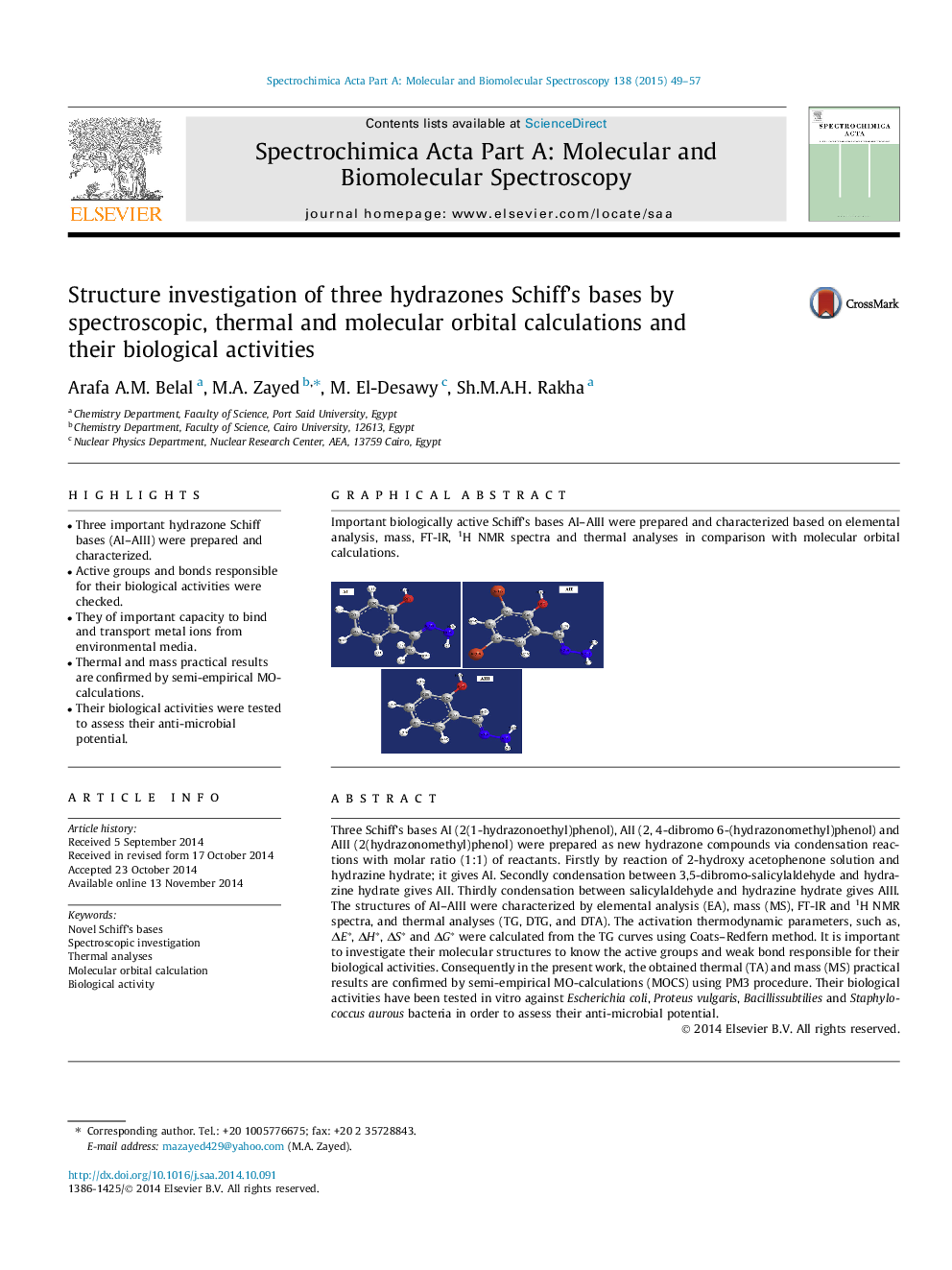| کد مقاله | کد نشریه | سال انتشار | مقاله انگلیسی | نسخه تمام متن |
|---|---|---|---|---|
| 1229035 | 1495231 | 2015 | 9 صفحه PDF | دانلود رایگان |
• Three important hydrazone Schiff bases (AI–AIII) were prepared and characterized.
• Active groups and bonds responsible for their biological activities were checked.
• They of important capacity to bind and transport metal ions from environmental media.
• Thermal and mass practical results are confirmed by semi-empirical MO-calculations.
• Their biological activities were tested to assess their anti-microbial potential.
Three Schiff’s bases AI (2(1-hydrazonoethyl)phenol), AII (2, 4-dibromo 6-(hydrazonomethyl)phenol) and AIII (2(hydrazonomethyl)phenol) were prepared as new hydrazone compounds via condensation reactions with molar ratio (1:1) of reactants. Firstly by reaction of 2-hydroxy acetophenone solution and hydrazine hydrate; it gives AI. Secondly condensation between 3,5-dibromo-salicylaldehyde and hydrazine hydrate gives AII. Thirdly condensation between salicylaldehyde and hydrazine hydrate gives AIII. The structures of AI–AIII were characterized by elemental analysis (EA), mass (MS), FT-IR and 1H NMR spectra, and thermal analyses (TG, DTG, and DTA). The activation thermodynamic parameters, such as, ΔE∗, ΔH∗, ΔS∗ and ΔG∗ were calculated from the TG curves using Coats–Redfern method. It is important to investigate their molecular structures to know the active groups and weak bond responsible for their biological activities. Consequently in the present work, the obtained thermal (TA) and mass (MS) practical results are confirmed by semi-empirical MO-calculations (MOCS) using PM3 procedure. Their biological activities have been tested in vitro against Escherichia coli, Proteus vulgaris, Bacillissubtilies and Staphylococcus aurous bacteria in order to assess their anti-microbial potential.
Important biologically active Schiff’s bases AI–AIII were prepared and characterized based on elemental analysis, mass, FT-IR, 1H NMR spectra and thermal analyses in comparison with molecular orbital calculations.Figure optionsDownload as PowerPoint slide
Journal: Spectrochimica Acta Part A: Molecular and Biomolecular Spectroscopy - Volume 138, 5 March 2015, Pages 49–57
